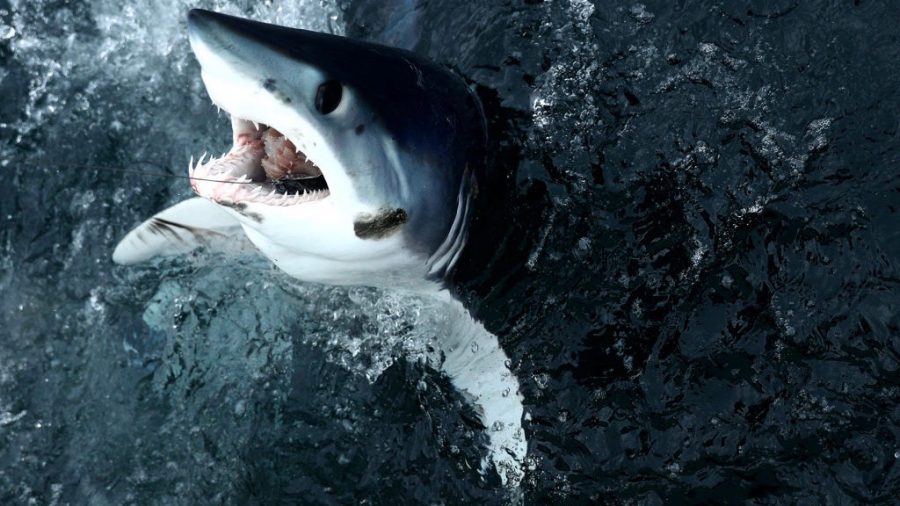For the first time, scientists have found evidence of a large shark being preyed upon by another large shark, a surprise that came after they’d been studying a more than 7-foot-long pregnant porbeagle shark before it was eaten.
According to a Sept. 2 study published in Frontiers in Marine Science, a peer-reviewed journal, a tag placed on a pregnant porbeagle shark after 5 months into research began emitting warmer than usual temperature readings, which remained consistent, showing signs it had been ingested.
Scientists from Arizona State University’s School of Life Sciences, Oregon State University’s Coastal Oregon Marine Experiment Station, and the Rhode Island-based Atlantic Shark Institute collaborated on the research.
Researchers used pop-off satellite archival tags (PSATs), which measure temperature, movement, and depth, to study sharks tagged in the Northwest Atlantic near Bermuda. They also used a finmount tag attached to the shark’s dorsal fin, which emits location readings through satellite whenever the shark’s fin is above water, according to the study.
About five months after tagging, the pregnant porbeagle’s PSAT tag continued to show typical depth readings, with the shark ascending and descending in waters as deep as 150 to 600 meters. What was unusual, they say, was that the tag began giving readings that were about five degrees Celsius warmer than usual, which indicated that the shark had been eaten.
Before March 21, 2021, average temperature readings on the shark’s tag read about 17.4 degrees Celsius for depths between 100 to 700 meters, which jumped to an overall average of 22.2 degrees for the same depths after the alleged ingestion, they said.
Only a mako, great white, or a larger porbeagle would be capable of doing so, according to the scientists. It is also the first-time scientists have found such evidence of an adult porbeagle shark being eaten alive, which is an endangered species, they said.
“This is the first evidence of predation on a porbeagle globally and provides novel insight into inter-specific interactions for this large, threatened shark species,” a portion of the study reads.
Using existing data, they concluded the predator in this incident was likely a white shark, based on its swimming patterns. Makos tend to stay between the sea surface to 400 meters during the day, while white sharks spend more time at depths of 400 to 600 meters, according to existing data, which more closely matches the tag data being studied, according to recent findings.
Eleven sharks were tagged for the recent study, one of whom died after just 50 days, for unknown reasons, and the only other death being the pregnant shark for the year-long study.
Study results also revealed the capturing, tagging, and releasing of the sharks didn’t show any signs of harm to them or disruption from their usual behaviors. However, scientists have said that satellite tags used in the research can attract predators, making those observed more at risk.
They said such research is nevertheless needed to understand predator-prey interactions in mesopelagic waters, relating to ocean depths of 200 to 1,000 meters, to improve strategies that help “maintain ecosystem health”, they said.
A request for comment from the scientists in the study wasn’t received before publication.

